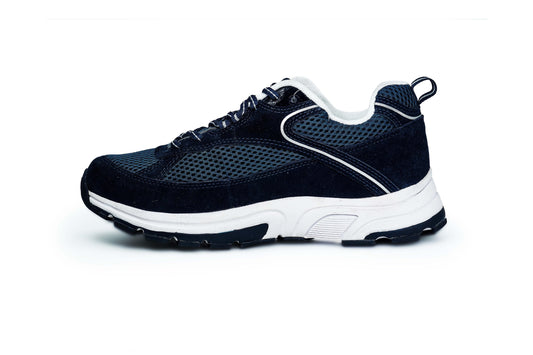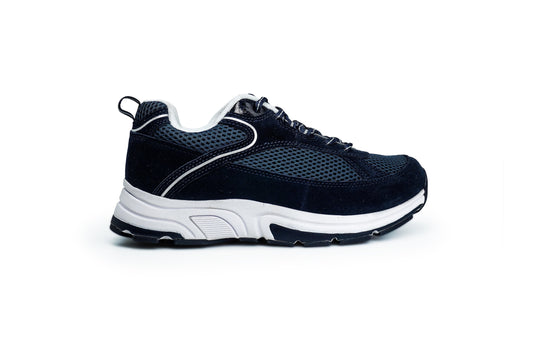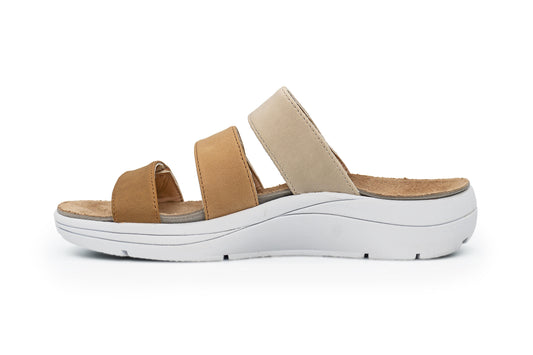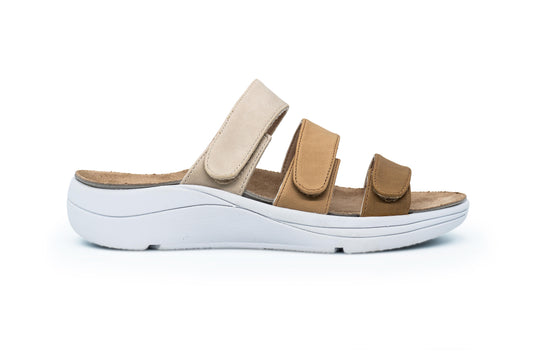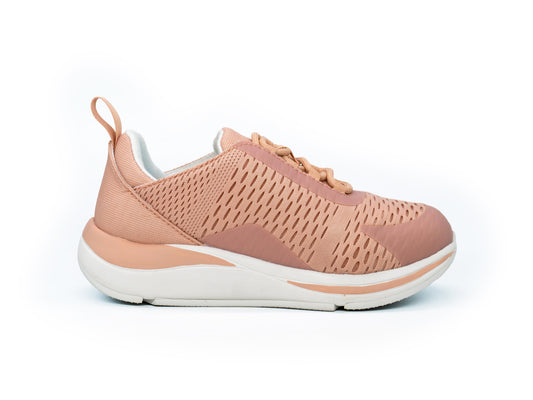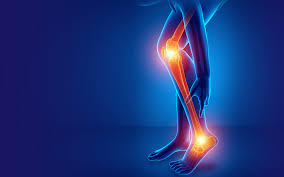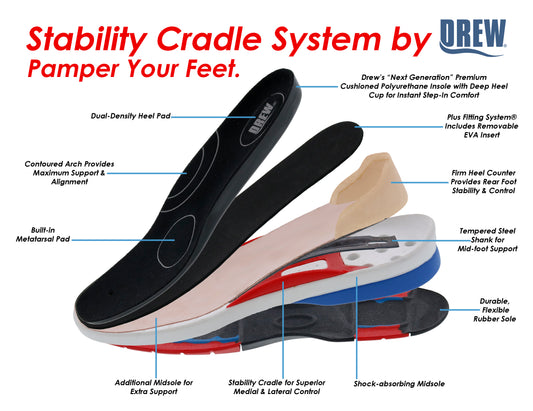Understanding Nerve Compression Syndrome Symptoms and Treatments
Nerve compression syndrome, often referred to as a pinched nerve, can cause a host of uncomfortable symptoms. These symptoms can interfere with daily activities and significantly impact quality of life. Understanding these symptoms and the various treatment options is crucial for anyone suffering from this condition. By recognizing the signs early and seeking appropriate care, individuals can minimize discomfort and prevent further complications.
In this guide, we will explore what nerve compression is, the symptoms associated with it, and the treatments available. We will also discuss the importance of proper footwear for those dealing with neuropathy and nerve compression. This comprehensive overview aims to equip you with the knowledge needed to tackle nerve compression effectively, empowering you to make informed decisions about your health.
Nerve compression syndrome occurs when a nerve is squeezed or compressed, often by bones, cartilage, muscles, or tendons. This pressure can disrupt the nerve's function, leading to pain, tingling, numbness, or weakness. The condition can occur in various parts of the body and is often exacerbated by repetitive motions or sustained pressure on a specific nerve.
The most frequent causes of nerve compression include repetitive motion injuries, trauma, and certain medical conditions like arthritis or diabetes. Repetitive motion injuries are particularly common in individuals who perform the same movements day after day, such as typing or using hand tools. Trauma from accidents or falls can also lead to nerve compression, as can conditions like obesity, which increase pressure on nerves due to excess body weight. Additionally, inflammatory conditions such as arthritis can cause swelling around the nerves, further contributing to compression.
A "pinched nerve" is a colloquial term used to describe nerve compression. Although it can happen anywhere in the body, common sites include the neck, lower back, arms, and legs. The term "pinched" can sometimes be misleading, as it implies a simple issue, whereas the condition can be complex and persistent. Understanding the precise location and cause of the compression is vital for effective treatment and management.
Symptoms can vary depending on the location of the compressed nerve. Here are some common symptoms associated with different areas:
- Pain and stiffness in the neck
- Tingling or numbness in the shoulders and arms
- Weakness in the hand
Symptoms in the neck and shoulder area often arise from poor posture or prolonged periods of looking down, such as when using smartphones or computers. This can lead to conditions like cervical radiculopathy, where nerve roots are compressed. Early intervention, including ergonomic adjustments and exercises, can help alleviate these symptoms and prevent chronic issues.
- Sharp pain in the lower back
- Radiating pain down the leg
- Numbness or tingling in the legs
Lower back nerve compression, often referred to as sciatica, can be debilitating. The sciatic nerve runs from the lower back down each leg, and compression can cause pain to radiate along this pathway. Maintaining a healthy weight and strengthening core muscles can reduce the risk of developing lower back nerve compression. Regular stretching and avoiding prolonged sitting can also be beneficial.
- Pain in the arm
- Numbness or tingling in the fingers
- Weakness in hand grip
Carpal tunnel syndrome is a common form of nerve compression in the arm and hand, often affecting individuals who perform repetitive hand movements. The median nerve, which runs through the wrist, can become compressed, leading to symptoms in the hand and fingers. Wrist braces and ergonomic modifications can provide relief and prevent further compression.
- Pain in the foot
- Numbness in the toes
- Weakness in the foot
Foot and leg nerve compression can result from conditions like tarsal tunnel syndrome, where the tibial nerve is compressed near the ankle. Individuals with flat feet or those who stand for extended periods are at a higher risk. Supportive footwear and regular stretching can help mitigate symptoms and provide comfort.
- Pain on the left side of the chest
- Tingling or numbness in the chest area
Chest nerve compression, though less common, can occur due to thoracic outlet syndrome, where nerves near the collarbone are compressed. This can result in chest pain and upper limb symptoms. Addressing posture and engaging in specific exercises can help relieve pressure and improve symptoms.
The good news is that pinched nerves can often be treated effectively. The key is early diagnosis and following the appropriate treatment plan. With timely intervention, many individuals experience significant relief and return to normal activities. However, neglecting symptoms can lead to chronic pain and even permanent nerve damage.
Several treatments can help alleviate the symptoms of a pinched nerve. Here are some commonly recommended approaches:
Limiting activities that exacerbate symptoms can help reduce pressure on the nerve. Rest is often the first step in treatment. Taking breaks during repetitive tasks and avoiding positions that trigger pain can be beneficial. However, complete inactivity is not advised, as gentle movement can promote healing.
Physical therapy can be highly effective for nerve compression. A therapist can guide exercises that strengthen and stretch muscles, helping to relieve pressure on the nerve. Customized exercise regimens can also improve flexibility and posture, reducing the likelihood of future compression.
Anti-inflammatory drugs, such as ibuprofen, can help reduce swelling and relieve pain. In some cases, corticosteroid injections may be administered to provide more potent relief. It's essential to use medications as directed and consult a healthcare provider for persistent or severe symptoms.
Braces or splints can keep the affected area immobile, allowing the nerve to heal. These devices can be particularly helpful for conditions like carpal tunnel syndrome or other repetitive strain injuries. Wearing them during activities that exacerbate symptoms can prevent further damage.
In severe cases where other treatments have failed, surgery may be necessary to relieve pressure on the nerve. Surgical options vary depending on the location and cause of compression, and they are typically considered only after exhausting conservative treatments. Recovery from surgery can take time, and physical therapy is often required to regain full function.
For those dealing with mild symptoms, some home remedies may offer relief:
- Applying ice packs to reduce swelling
- Using heat therapy to relax muscles
- Gentle stretching exercises
- Over-the-counter pain relief medications
In addition to these remedies, maintaining a balanced diet and staying hydrated can support overall nerve health. Practicing stress-reduction techniques such as yoga or meditation can also aid in managing symptoms by promoting relaxation and reducing muscle tension.
For individuals with neuropathy, particularly those with diabetes, proper footwear is essential. Neuropathy shoes are designed to provide support, reduce pressure, and prevent further nerve damage. The right footwear can significantly impact comfort levels and prevent complications such as ulcers or sores, which are common in individuals with reduced sensation.
- Adequate arch support
- Cushioning to absorb shock
- A wide toe box to prevent pressure
- Breathable material to prevent moisture buildup
Selecting footwear with these features can prevent irritation and provide stability, reducing the risk of falls and injuries. Regularly inspecting feet for any signs of damage or pressure points is also crucial for those with neuropathy.
Diabetic shoes are specifically designed to protect the feet of individuals with diabetes. They help reduce the risk of foot injuries and improve comfort. These shoes often include removable insoles to accommodate custom orthotics and provide extra depth to prevent friction against sensitive areas.
Wearing the right shoes can prevent further complications and provide much-needed relief. It is advisable to consult a healthcare provider to find the best footwear for your condition. Regular follow-ups with a podiatrist can ensure that footwear remains appropriate as needs change over time.
Understanding the symptoms and treatment options for nerve compression syndrome is vital for managing and overcoming this condition. While many cases can be resolved with conservative treatments, early intervention is key to preventing long-term damage. Being proactive about your health and seeking professional guidance can make a significant difference in outcomes.
Whether dealing with a pinched nerve in the neck, back, or any other part of the body, a comprehensive approach including rest, therapy, and proper footwear can lead to significant improvements. Always consult with a healthcare professional for a diagnosis and personalized treatment plan. By staying informed and proactive, you can manage nerve compression effectively and maintain a high quality of life.

